Art + Psychology Link Love
Your periodic digest of a niche of this astounding Substack writing community and some elaboration, connections, and hopefully community-building
See this post if you aren’t sure what this roundup is all about.
Reminder: I draw connections between what the writers are sharing and my understanding of how that relates to art + mental health but this doesn’t mean that the original writer intended that or agrees with it in full or part … I always encourage you to go read the full pieces whose snippets capture your attention here to find out what the writer’s piece intends and offers.
From the past week or so then …
Psychology and Creative Process
From by in Making Sense of Data:
in which she explores Olympics athlete Nicola Olyslagers’ practice of tracking all of her jumps in a journal and shares a photo that quotes the athelte:
"Something with pen and paper just makes me happy."
It’s about how capturing that moment in journal form immediately after can provide insights that can be utilized for deeper understanding. Tara shares:
“Even once Olyslagers's silver medal was guaranteed, she kept recording her jumps—her commitment to the practice is essential to her performance.
While I don't want to suggest that making sense of data requires obsessive attention to detail, it does require commitment and habit formation. Whether or not that habit is externalized in the form of a journal or spreadsheet or dashboard, it's the process that allows meaning to emerge from data.'“
The habit of it is key. And so is making sure that when you review, you don’t just focus on one experience, one point in time, but instead on the whole experience. Tara succinctly says:
“Time is one of the great contextualizers. Data needs history to make it useful.”
of in A rose, a cat, a giraffe
shares one of her sketchbook pages step by step with insight into the creative process:
“See how this working process leaves me plenty of time to eat breakfast and sip coffee? And yes, it has taken me years of almost daily practice to learn to draw as well as I do. It's easy to practice because I'd rather draw than doomscroll…”
of in Self-imposed challenge
shares two truths:
“I am tired.
Creativity is a full body experience, and the daily five hours or so of very intense focus and physical act of drawing is tiring. I mean, you know, not surgeon intensity - I can put it into perspective - but it is tiring.
But at the same time, I am energised.
I want this practice to last forever. I want to draw ALL the beings. I get up in the morning and am excited to figure out who will fall out of my pencils today. I am absorbed in wonder at the very simple but vastly complicated act of laying down strokes of pigment to create a life-like rendering of the most divine wild beings.”
RELATED: From of in Jim Henson exposed my shadow.
“Lately I’ve been trying to parse the jumble of projects I have going on, or have waiting in the wings. I realize that, as usual, I’m being completely unrealistic at best and more like outright sadistic as my own manager.
I do this to myself in waves.
Then the wave crashes. This time last year I crashed hard. I was in and out of doctors’ offices all summer— and that became fall, then winter, then spring.
There’s just always this pressing urge to keep flowering even while I produce fruit.” …
“This is a pressure that exists outside of market forces. This is a burning creative desire.’
Psychology and Creative Content
shared the results of a photography prompt on “meaning”
“Some photos incorporate universal imagery which represents meaning to millions of people, like Robert’s image, “I am…”
The meaning of some imagery is highly personal, as Mhelene reminds us of the way we honor our ideals through the art we inscribe on our bodies.”
Which made me think about the very personal and also quite widespread (though maybe not universal) meaning of my only attoo, the semi-colon:
Psychology and Creative Medium
L’Officiel shared thoughts on “junk journaling” that I found in the weekend roundup by
:“So what are the benefits of junk journaling? Journaling has been known for a long time as a practice that helps to reduce stress and improve mental health, since the act of self reflection that comes with it is a form of meditation, but junk journaling also has its own unique upsides. It can often feel more artistic and creative than simply writing everything down, since you get to spend time collaging pieces together and making something that feels personalized and visually appealing. You can explore different aesthetics and styles with a junk journal.
Plus, you'll spend your time looking for things in your daily life that you can collect. You might start appreciating the design of your favorite coffee shop's napkins or grabbing business cards from local shops when you visit, simply because you look forward to collaging it into your journal later. Junk journaling is not only a fun and stylish way to keep track of your memories, but it's also a great way to shift your perspective towards finding beauty in the mundane.”
RELATED: of shared Create a portable art studio!
“Join me at the painty table as I put together a small travel mixed media art journaling kit to carry along with me. It’s the perfect little kit to take along to a coffee shop too, for an artist date!”
of answered interview questions from
including “Why Photography?”
“I can do it anywhere, anytime. Even if I don't have my camera, at the least I'll have my phone for snapshots. Some of my favorite pictures have been taken while waiting in an urgent care, or stuck in traffic. I'm not stuck in a studio, I'm out in the world making art.”
Portability is one of the core reasons many people like crochet as well (as compared to say painting). Sometimes a medium is chosen because it removes barriers to making.
Psychology and Creative Productivity/Flow
of in It’s Okay To Take Your Time
shared a beautiful drawing that that linked to a blog post that has this which I relate to so much:
“I started coming out of my latest depression and suddenly everything that would have taken SO MUCH ENERGY was easy. I was reminded why other people say, “I don’t understand why life is so hard for you…you must be lazy.” Because it suddenly wasn’t hard at all. But not because I was lazy or not. The only thing that changed was my depression lifted and the symptoms (real and valid and absolutely true) lifted as well and I was able to breathe and work and clean and organize and move like a neurotypical person.”
of in What’s honest and true:
“Summer is usually my most prolific art-making season yet I didn’t make any art last summer, nor this summer thus far. True, I had a good excuse last year—I moved house—but this year?
Yes, there are still boxes to unpack in the studio. Yes, I have a storeroom full of unsold art that nags me when I open the door and takes up space in my creative brain. But is there something else I’m struggling to articulate?
I’m trying not to let my lack of artmaking raise the anxiety flag. I’ve been here before and I’ve always eventually found my way back to art but this time, right at the edge of my brain, there’s an acceptance that if I never walked back into the studio, that would be okay—I’d be alright.”
of in On keeping the spark for you artistry, even when it's your job
“I love my artworks most when I’m free to roam whenever and wherever it suits me.
Like scribbling notes while cleaning, or writing in the car as we’re driving somewhere with the family, or quickly adding some stitches to an embroidery while the kids are content for 5 minutes in the sandbox.”
Who relates?
Psychology and Artistic Identity
of in Little Intimacies #20: Last days
shared this beautiful memory/thought:
“Walking the whole length of the city. Walking around Kelvingrove Park. Walking to the Mitchell Library to write my first ever novel, never published. Walking home, joyful at what I had discovered. That I could sit in a quiet room and make a world. That I might be able to actually do it.
How it felt, so many years later, when a person I loved visited the library and found my books there and told me about it.”
I have often thought about my seventeen and twenty three and thirty year old writer self and how my work today both honors and baffles her.
of shared In quiet celebration …
of 100 Substack newsletters started boldly despite …
“wondering why the bloody hell I was even thinking of trying to wriggle my own paltry words in amongst so many brilliant others. Nevertheless, despite a head filled with fearful self-recriminations, cringing with embarrassment, I hit the send button anyway.
In truth these fears, the constant cerebral interrogations which end with a grand finale of ‘just hit the button, what have you to lose’ have never stopped. Grasping hold and not letting go of the confidence necessary to hit that damn button is still a traumatic exercise in self (dis)belief I could live without. But I do, and have done ninety-nine times!”
The mind can get in the way of creativity … or we can acknowledge that it has some things to say and bravely do the creative thing anyway.
Psychology and Creative Business
of in Five on Friday:
“When your knitting is your relaxation but also your work - and ditto your writing (and often reading) is seems like there is such a blurring of the boundaries that you don’t know where ‘work you’ ends and ‘relaxing you’ begins.”
Resonates so much for me. It’s why I never tried to earn money from making crochet items because I needed it to be an outlet separate from monetization and yet I ended up making a living writing about crochet for over a decade so it still got a bit complicated.
of in How to make space for rest and time off in your business
offers this critical reminder along with relevant resources:
“For me, rest is not separate from business. Rest isn’t the thing you squeeze into the margins of your business. Rest is key to a slow, gentle and profitable business (of which you and your wellbeing are the most important part).”
RELATED: From of in 4 Cures for Writer's Block that Actually Work
“Writing has been among the greatest joys of my life, but sometimes it feels especially difficult. Over time, I’ve learned that this is a symptom of exhaustion. It’s my mind telling me to rest.”
is producing a new self-published art book and shares:
“It will be called "Demimonde: the live drawing of Suzanne Forbes". it will be sold almost entirely on through the kickstarter, unless a few queer bookstores order a few. I don't expect to sell or print more than 100 copies, if I am very lucky.
No publisher is interested in me and I am much too sick to pursue sending it out to publishers, so it is an entirely self published book.”
And I believe this is a beautiful thing. It’s about the quality and the mission and the celebration of the community and the art, not about the quantity sold or the name of the publisher backing it.
How Art Heals
of shares In Celebration of Creativity
about why we create …
“I create to explore my senses, to try out new things, to touch the edge of the unknown, and to weave dreams into the fabric of my reality.
And although there are many things I tire of, I never grow tired of creating, and I never tire of seeing the wonderful creativity that continues to flourish in this world.”
of in The Poets in My Sketchbook
shares how sketching hones her ability to pay attention which itself creates a beautiful sense of healing.
“that’s what sketching has always been for me:
My own way of paying more attention and noticing more of those quiet miracles.
These days, it can be so hard to see the world beyond the screens that surround us. My sketchbook is the only thing I can hold out in front of me that actually helps me see the world more clearly, and remember it more deeply.”
This relates to something I shared this week that several people really resonated with:
When Art Harms/ Hinders/ Is Complicated
of writes about The Sludge:
“The stuff of oil painting can be harmful and you’d be well advised to learn about the nature of the related materials. Many pigments are made from hazardous materials including heavy metals. If you use mediums or solvents, you can expose yourself to airborne toxins such as turpentine or mineral spirits. Aside from the problem of exposing yourself to these substances, there is the problem of detritus. Oil painting related garbage is considered hazardous waste.”
Some of the artists I know really struggle with both physical and mental health ramifications of working with paints and other art supplies. There are alternatives, such as choosing non-toxic materials (plant dyes instead of chemical dyes, for example), and there are preventatives (using a respirator when working with air pollutant materials is one option) but this can change the product and or process of creativity.
My dad was a woodworker who often worked with turpentine and varnishes and various things that I don’t even remember but they smelled terrible. I can immediately recall the smell of his shop, that smell mixed with sawdust and cigar smoke. He almost never wore a respirator or mask, although he did often keep the big garage door to his shop wide open for the air flow. I wonder sometimes how much, if any, of his physical and mental struggles were related to his materials. I suspect only a small percentage (genetics, brain chemistry, sitautional factors all being much strainger) but still find the question curious.
Art in Community
of shared in to have forgotten everything
“Newsom’s lyrics, like her compositions, are complex, wistful, and deeply weird. For two decades her work has been a significant influence on my writing, although not so nakedly that anyone might notice.”
Kate shares a beautiful poem that she wrote in response to one of Newsom’s songs. And then unrelated, sort of, to that, shares a collage that someone sent her (worth looking at) inspired by an essay of her own published in 2017. It makes me think about how us artists, us humans, are constantly impacting one another in the most profound ways, often asynchronously over time.
of writes about creative envy in Community over competition: part 1
“Writing, like other arts, is a haunted house full of opportunities for envy. A fellow writer announces that he was accepted into a prestigious residency, and eek!, a bloodied zombie appears from around the corner. An essayist lists her most impressive bylines, and a chainsaw revs in the distance. A debut author unboxes her review copies in an Instagram Reel, and a clown emerges from the shadows. If you’re not careful, you can walk out of a social media scroll sesh or a writerly chitchat with the wind knocked out of your lungs and your pants thoroughly soaked.
Is that a good way to live, though? Not really, and I’m saying that firsthand. Many of art’s main perks are the ways in which it connects us with others. We trade stories, form communities, provide solace, hold up mirrors to one another’s faces. If all we feel is envy for our fellow creatives, what’s the point of making art at all?”
And then explores ways of mitigating the envy and concludes in large part that “community is the cure.”
Short Shares
I also felt moved to share:
From
of in Some cute things:“I borrowed some flowers from my friend’s studio the other day. She was rushing out the door, so I swooped them up. She changed the water in the vase for me. I rearranged the dried out wattles. And this lovely little arrangement sat in my room for a moment for me to take some photos.”
Shoutouts
Thanks to
over at by for including this note in the Fostering Connection roundup:





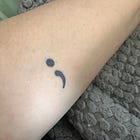


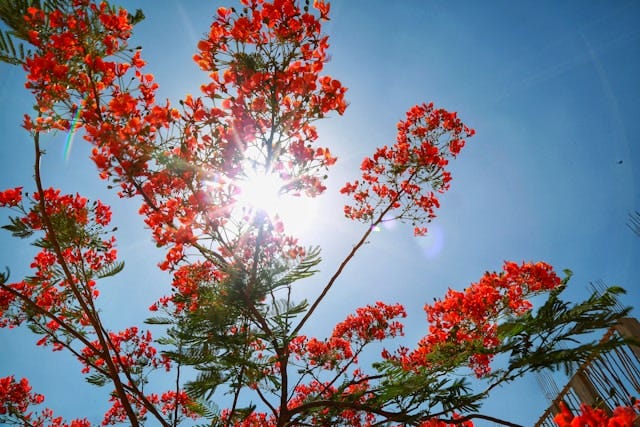

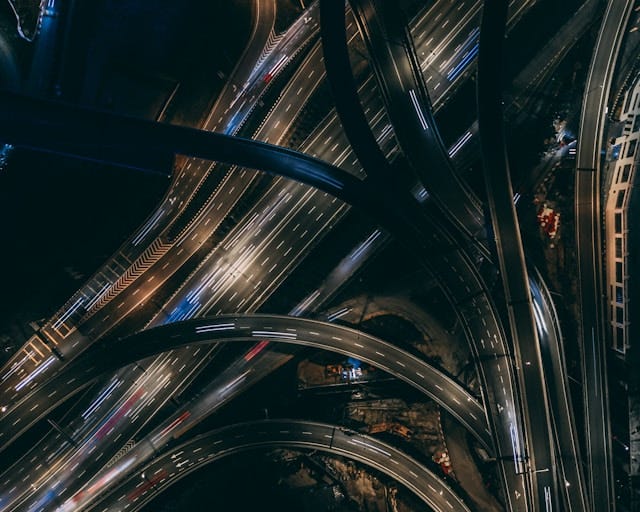
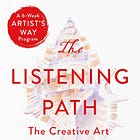
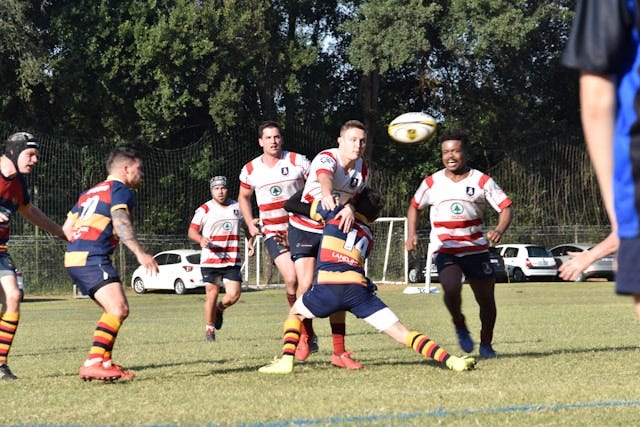


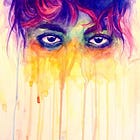
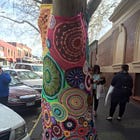
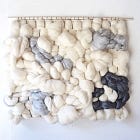
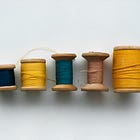
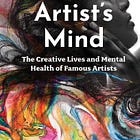
Thank you so much for including my post in this wonderful round up of thoughtful writing xx
Reading your digests is one of my fave things on Substack!!